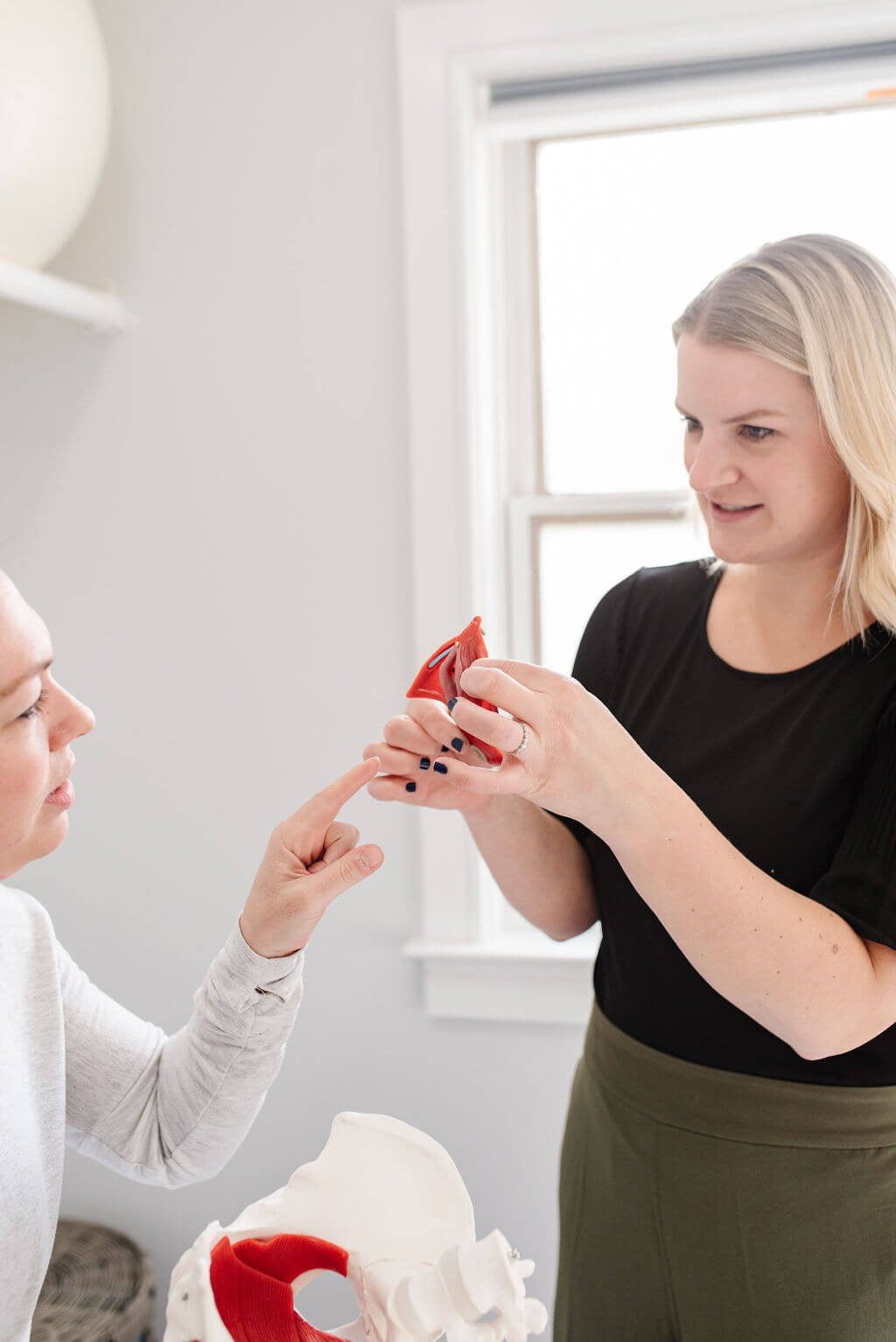What is the pelvic floor and what is pelvic health therapy?
What is the pelvic floor?
The pelvic floor is a group of muscles and ligaments that line the bottom of the pelvis and give support to the organs above. The pelvic floor muscles sit like a hammock and start at the pubic bone in the front and then extend to the tailbone and sacrum in the back. When you are sitting down, the tissue that you are sitting on is the pelvic floor.
What does the pelvic floor do?
The pelvic floor muscles have both voluntary control (meaning you can contract and relax the muscles) and involuntary control (meaning your body can contract the muscles without your control).
The pelvic floor supports and provides structure to the external genitalia and is heavily controlled by our nervous system (hence why symptoms can be worse when you are stressed). There are 3 layers of muscles that sit in the pelvic floor and they help provide sphincteric control to the bladder and bowels, aid in sexual function, help support the organs from above and help stabilize our pelvis during movements such as walking.
Does everyone have a pelvic floor?
Regardless of age or gender, you have a pelvic floor (it is a common misconception that females are the only ones who have a pelvic floor).
What are signs that something is wrong with the pelvic floor?
Symptoms that something is going on with the pelvic floor can include any of the following:
Bladder symptoms such as pain with urination, urine retention, urine leakage, and overactive bladder
Bowel symptoms such as constipation, fecal urgency, fecal incontinence, pain with bowel movements, hemorrhoids and fissures
Sexual symptoms: such as inability to orgasm and pain with intercourse.
Orthopedic symptoms: such as hip pain, back pain and pelvic pain
If you are struggling with any of these symptoms, you should seek help from a pelvic floor therapist.
What is pelvic health therapy?
Pelvic health, or pelvic floor therapy is performed by a licensed physical therapist or occupational therapist and targets to improve the function of the pelvic floor muscles in order to reduce or completely eliminate symptoms.
Because of the location of the pelvic floor muscles, treatment to them is typically done internally (vaginally or rectally). However, the pelvic floor is also heavily influenced by other muscles that sit outside of our pelvis (like our hip muscles, core, back muscles and even our feet!). Therefore, treatment should also address those muscles as well.
The key to successful treatment of pelvic floor dysfunction is retraining how the pelvic floor works with the rest of the body.
To learn more about how pelvic floor therapy can help you, click here.



